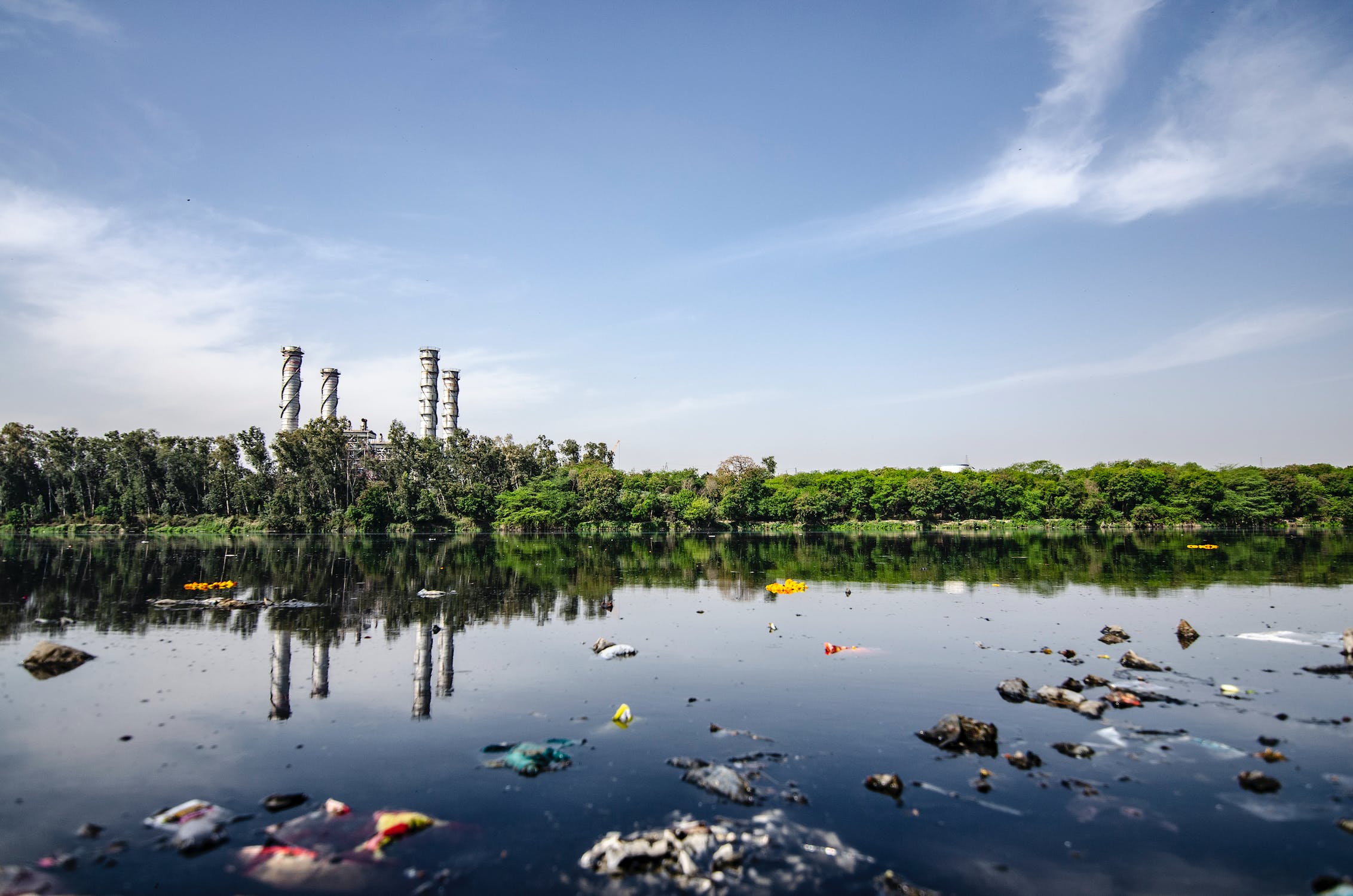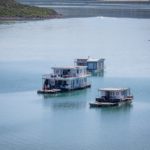|
|
Introduction
Water is a fundamental resource that sustains life on our planet. However, a pressing issue threatens the availability and quality of water worldwide – the global water crisis. This crisis is characterized by water scarcity, pollution, and a lack of access to safe water and sanitation. This article will explore the causes and effects of the global water crisis and potential solutions to address this pressing issue.
Causes of the Global Water Crisis
1. Population Growth and Urbanization
According to projections by the United Nations, the global population is expected to surge to a staggering 9.7 billion people by the year 2050. This exponential population growth represents a critical factor that significantly amplifies the demand for freshwater resources on a global scale. As more people inhabit our planet, the need for water—essential for drinking, sanitation, agriculture, and industry—becomes increasingly pronounced.
Example
A vivid illustration of the challenges of population growth and urbanization can be found in Delhi, India. Renowned as one of the world’s most populous cities, Delhi has undergone rapid urbanization over the past few decades.
Unfortunately, the transformation from a sprawling metropolis to a megacity has strained its water supplies to the brink. As millions of individuals flock to Delhi for economic opportunities and a better quality of life, the water demand has soared to unprecedented levels.
The consequences of this surge in population and urbanization are palpable. Many residents of Delhi face the harsh reality of water scarcity as resources become stretched thin. Access to clean and reliable drinking water has become a daily struggle for numerous households. The burgeoning population has placed immense pressure on the city’s infrastructure and natural water sources, exacerbating the water crisis.
The situation in Delhi underscores the urgent need for innovative water management strategies, sustainable urban planning, and equitable distribution of water resources. It serves as a stark reminder that as the global population expands, proactive measures to secure our water future are paramount, ensuring all communities have access to this precious and finite resource.
Climate Change
Climate change, driven by a complex interplay of human activities, has emerged as a prominent driver of the global water crisis. Its far-reaching impacts include erratic precipitation patterns, prolonged droughts, and an alarming increase in the frequency and intensity of extreme weather events. These phenomena disrupt the delicate balance of Earth’s water cycle, posing significant water availability and quality challenges.
Example
In California, from 2011 to 2017, a prolonged drought, known as the “California drought” or “megadrought,” vividly showcased climate change’s impact on water resources. This dry spell featured alarmingly low precipitation levels, significantly below historical averages. It strained the state’s vital water sources, reservoirs, and aquifers, endangering millions of residents’ well-being.
Agriculture, heavily reliant on irrigation, faced severe hardships, including reduced crop yields and tough choices for farmers. Economic challenges, job losses, and higher food prices ensued.
Watch here how Southern California imposes water restrictions as the state struggles with megadrought.
To address the crisis, California enacted strict water conservation measures, compelling significant reductions in water usage. This emphasized the pressing need for robust water management approaches amid climate change.
3. Over-extraction of Groundwater
The over-extraction of groundwater is a prominent contributor to the global water crisis. This phenomenon occurs when excessive amounts of groundwater are pumped from underground reservoirs, known as aquifers, at a rate that surpasses the natural replenishment process. As a result, aquifers are being depleted at an alarming pace, leading to water scarcity concerns.
Example
Groundwater over-extraction is strikingly evident in the Ogallala Aquifer beneath the U.S. Great Plains, vital for regional agriculture, particularly irrigation. NASA Earth Observatory’s research reveals a concerning trend: the aquifer is depleting up to six times faster than natural replenishment processes like rainfall and seepage.
Watch here to learn more about Ogallala Aquifer.
This swift depletion has dire consequences. It imperils future agricultural water availability, threatening crop production, sustainability, and farmers’ livelihoods. Additionally, excessive groundwater pumping can lead to land subsidence, damaging infrastructure ecosystems and exacerbating water challenges.
Addressing this issue requires a multi-pronged approach, encompassing sustainable groundwater management, enhanced agricultural water efficiency, and protective policies. Urgent action is imperative to shift toward responsible water usage safeguarding water for present and future generations.
Poor Water Management
Inadequate water management practices pose a significant challenge in the global water crisis. As the World Bank indicates, research World Bank indicates, underscores the prevalence of inefficient water distribution systems and insufficient infrastructure, leading to substantial water losses.
This issue becomes particularly pronounced in developing countries, where up to 60% of urban water supply is lost due to many factors, including leaky pipes and ineffective management practices.
Example
In many urban areas within these nations, aging and poorly maintained pipelines often suffer from leaks, causing a substantial portion of treated water to go to waste before it reaches consumers. Additionally, a lack of proper monitoring and maintenance further exacerbates the problem, resulting in significant water scarcity issues that affect communities.
The consequences of poor water management ripple through societies, impacting water availability, public health, economic development, and overall well-being. Addressing this critical aspect of the global water crisis necessitates comprehensive improvements in infrastructure, efficient management practices, and investment in modernizing water distribution systems to minimize losses and ensure equitable access to clean water.
To make sure we have enough water for the long run, we need to use water slower than it naturally gets replaced. “Renewable internal freshwater flows” means water from within the country, like rivers and rain that replenishes groundwater.
Water Pollution
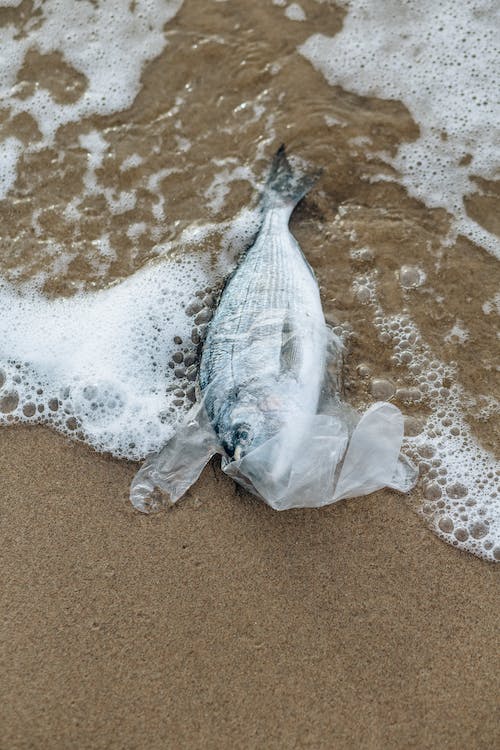
Water pollution is a pressing concern and a prominent cause of the global water crisis. Extensive research, as documented by the United Nations Environment Programme (UNEP), highlights that water sources worldwide face contamination due to many pollutants, including industrial runoff, agricultural runoff, and untreated sewage.
Example
A striking example of the devastating impact of water pollution can be witnessed in the case of the Ganges River in India. This revered and sacred water source, the Ganga, has long held spiritual significance for millions. However, despite its cultural and religious importance, the Ganges River has become heavily polluted due to industrial and domestic waste discharge.
Watch here the sacred but polluter Ganges River.
Industrial activities along its banks release harmful chemicals and toxins, while untreated sewage from urban areas flows directly into the river. As a result, the Ganges River is now one of the most polluted water bodies globally, posing grave health risks to the communities that rely on it.
Addressing water pollution requires a multifaceted approach involving stringent regulations, improved waste management, and sustainable industrial practices. It emphasizes the urgent need for collaborative efforts to preserve and protect water sources from contamination, ensuring access to safe and clean water for communities worldwide.
Inequitable Access
Inequitable Access to clean and safe drinking water is a pressing issue that exacerbates the global water crisis, leaving millions of people in dire need. According to World Health Organization (WHO) research, a billion individuals worldwide lack access to even the most basic drinking water services. This alarming statistic paints a stark picture of the disparities in access to clean water resources.
Example
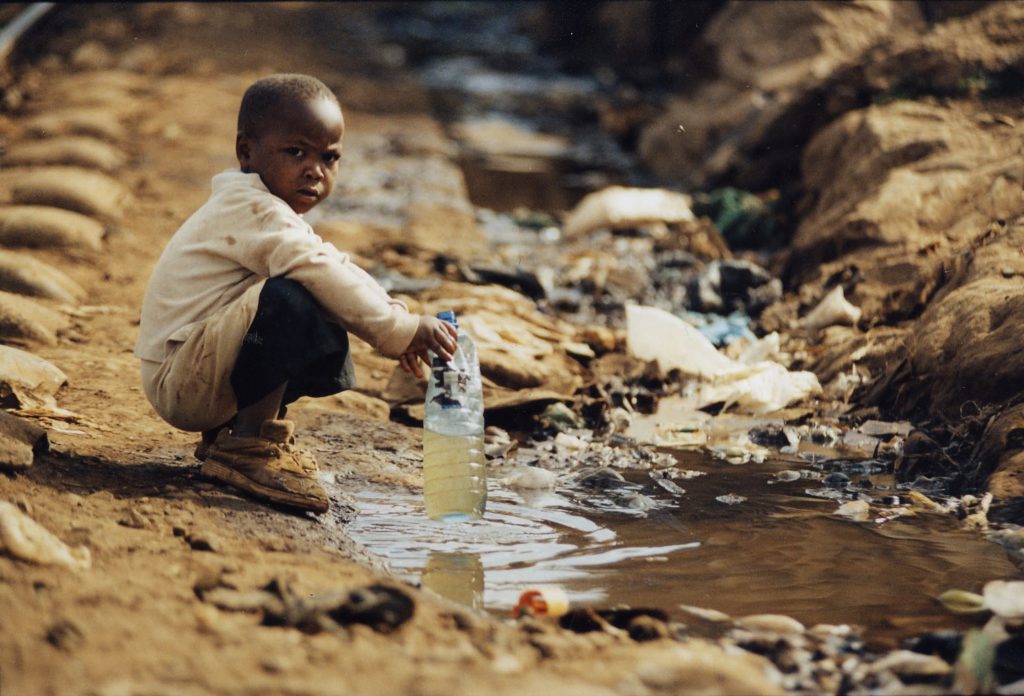
In Sub-Saharan Africa, only 24% have safe drinking water, causing severe health issues. Clean water is a fundamental right, yet reliance on unsafe sources leads to diseases like cholera. Women and children bear the burden, walking long distances for water, impacting education and perpetuating poverty.
This inequity demands action for water, justice, and dignity. As responsible global citizens, we must ensure universal access. We can eliminate disparities and create a more equitable world through collaboration, investment, and sustainable practices.
Inefficient Agricultural Practices
Inefficient agricultural practices have been identified as a significant contributor to environmental issues, particularly in the context of water usage and greenhouse gas emissions. Food production, in particular, plays a substantial role in these challenges.
One glaring example is the production of red meat, which is notorious for its high-water footprint. To produce just 1 kilogram of red meat, an astonishing 15,000 to 18,000 liters of water are required. This staggering figure underscores the unsustainable nature of certain agricultural practices.
Examples of Inefficient Agricultural Practices:
- Water-Intensive Livestock Farming/Farming: The production of red meat, such as beef, is incredibly water-intensive. This inefficiency arises from factors like the need for extensive grazing land, the water consumed by livestock, and the production of animal feed.
Here’s a table listing four types of meat and four vegetables with relatively high water consumption in agricultural production. This information underscores the importance of sustainable agricultural practices to manage water resources efficiently:
| Category | Food Item | Approximate Water Footprint (Liters per 1 kg) |
|---|---|---|
| Meat | Beef | 15,000 – 18,000 |
| Meat | Lamb | 10,400 – 16,000 |
| Meat | Pork | 4,800 – 6,000 |
| Meat | Chicken | 3,500 – 4,000 |
| Vegetables | Asparagus | 250 – 370 |
| Vegetables | Avocado | 2,000 – 2,500 |
| Vegetables | Corn (Maize) | 900 – 1,700 |
| Vegetables | Rice | 2,000 – 5,000 |
These values are approximate and can vary depending on factors such as location, farming methods, and water management practices. Sustainable agriculture seeks to minimize the water footprint of food production, particularly for items with high water consumption, to ensure efficient and responsible use of water resources.
- Monoculture Farming: Monoculture farming, where a single crop is grown repeatedly on the same land, depletes soil nutrients and often requires excessive water and chemical inputs.
- Excessive Use of Fertilizers and Pesticides: The overuse of chemical fertilizers and pesticides can lead to nutrient runoff and water pollution, negatively impacting both ecosystems and human health.
- Lack of Sustainable Irrigation: In many regions, outdated and unsustainable irrigation practices lead to the over-extraction of groundwater, causing water scarcity and land degradation.
Agricultural water withdrawals mean the amount of water taken from sources like rivers and wells for farming, raising animals, and fish farming. It is measured by comparing it to all the water people use for farming, industry, and homes. So, it shows how much of the total water we use is for farming and related activities.
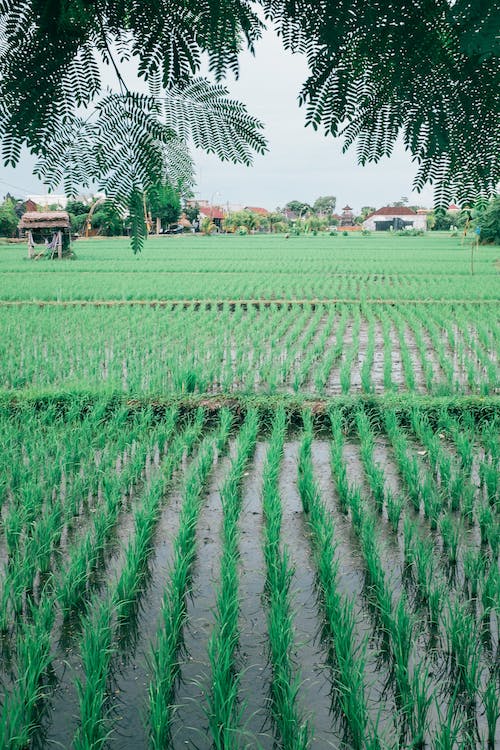
A vivid example of such inefficiency is the widespread use of flood irrigation, especially in arid and water-scarce regions. Flood irrigation, a conventional method, involves flooding fields with water, often over what crops require. While this technique has historically been employed for its simplicity, it results in significant water wastage.
During flood irrigation, a considerable amount of water is lost to evaporation, runoff, and deep percolation beyond the root zones of crops. This depletes water resources at an alarming rate and compromises the long-term sustainability of agriculture in these regions. As water becomes scarcer due to climate change and population growth, inefficient practices like flood irrigation exacerbate the global water crisis.
Efforts to address this challenge necessitate adopting more efficient and sustainable irrigation methods. Techniques such as drip irrigation, which delivers water directly to plants’ root zone or uses soil moisture sensors to determine precise watering needs, can significantly reduce water wastage while maintaining or even increasing crop yields.
By embracing these modern practices and promoting responsible water use in agriculture, we can alleviate the strain on global water resources and contribute to a more sustainable and water-secure future.
Solutions to Inefficient Agricultural Practices
- Reducing Meat and Dairy Consumption: As one of the most impactful steps, reducing meat and dairy consumption by 80% or adopting more plant-based diets can significantly lower the environmental burden. Plant-based diets are associated with lower water and land requirements and reduced greenhouse gas emissions.
- Sustainable Farming Practices: Encouraging and supporting farmers in adopting sustainable and regenerative agriculture practices can lead to increased crop yields with fewer inputs. Techniques like crop rotation, organic farming, and no-till farming help conserve water and maintain soil health.
- Efficient Irrigation: Implementing modern and efficient irrigation methods, such as drip irrigation and precision agriculture, can reduce water wastage and improve crop yields.
- Reducing Food Waste: Addressing food waste throughout the supply chain, from production to consumption, is crucial. It reduces the pressure on agricultural resources and helps make the food system more efficient.
- Research and Innovation: Investing in research and innovation in agriculture, including the development of drought-resistant crops and sustainable livestock farming practices, can contribute to more efficient food production.
Industrial Water Demand
The demand for water by the industrial sector, encompassing activities such as manufacturing and energy production, constitutes a significant aspect of the global water crisis. This sector’s reliance on substantial water resources places immense pressure on water availability, and a pertinent example of this can be witnessed in the United States.
Here’s a table listing some industries that use the most water, emphasizing the significant impact of industrial water consumption on water resources:
| Industry | Water Usage (Approximate Percentage) |
|---|---|
| Agriculture | 70% |
| Energy Production | 20% |
| Manufacturing | 5% |
| Mining and Extraction | 4% |
| Domestic Use | 1% |
Please note that these percentages are approximate and can vary by region and specific industry practices. The industrial sector’s substantial demand for water, including energy production and manufacturing, plays a critical role in the global water crisis and underscores the need for sustainable water management practices.
Example
In the United States, the thermoelectric power sector is a prime example of industrial water demand, responsible for generating electricity through processes like coal, natural gas, and nuclear power plants. This sector has a substantial appetite for water, accounting for 45% of the country’s total water withdrawals.
Thermoelectric power plants require vast amounts of water for cooling, where water absorbs and dissipates heat generated during electricity production. Consequently, these plants often draw water from nearby rivers, lakes, or groundwater sources to fulfill their cooling requirements. This practice can strain local water supplies, especially in regions already facing water scarcity or stress due to factors like drought or increased demand.
The issue of water demand by the industrial sector underscores the intricate relationship between water availability and various industries. It highlights the importance of implementing responsible water management practices within industrial processes to ensure a sustainable balance between water use and conservation, contributing to global water security.
Effects of the Global Water Crisis
- Death: Inadequate access to safe water leads to waterborne diseases like cholera, causing millions of deaths, mainly in developing countries.
- Disease: Contaminated water sources spread diseases such as typhoid, dysentery, and hepatitis, especially in areas lacking clean water and sanitation.
- Warfare: Water scarcity can lead to conflicts between nations as competition for resources escalates tensions, impacting peaceful coexistence.
- Lack of Irrigation: Water scarcity disrupts agriculture, reducing crop yields, and contributing to food scarcity and insecurity.
- Lack of Sanitation: Poor sanitation leads to diseases like trachoma and schistosomiasis, compromising public health.
- Lack of Hygiene: Inadequate access to clean water hinders proper hygiene practices, increasing the risk of illness.
- Agricultural Problems: Water scarcity affects crop and livestock production, impacting farmers’ income and food availability.
- Livestock Problems: Water scarcity affects livestock health and productivity, leading to economic losses.
- Malnutrition: Water scarcity reduces food availability and nutritional intake, contributing to malnutrition.
- Birth Defects: Contaminated water consumption during pregnancy can lead to birth defects and developmental issues.
- Poor Education: Lack of water and sanitation facilities in schools hinders attendance and learning, particularly for girls.
- Poor Healthcare: Inadequate water access in healthcare facilities leads to increased infections and compromised patient outcomes.
- Societal Impact: The water crisis perpetuates inequality, poverty, and social disparities, hindering socio-economic development.
Solutions to the Global Water Crisis
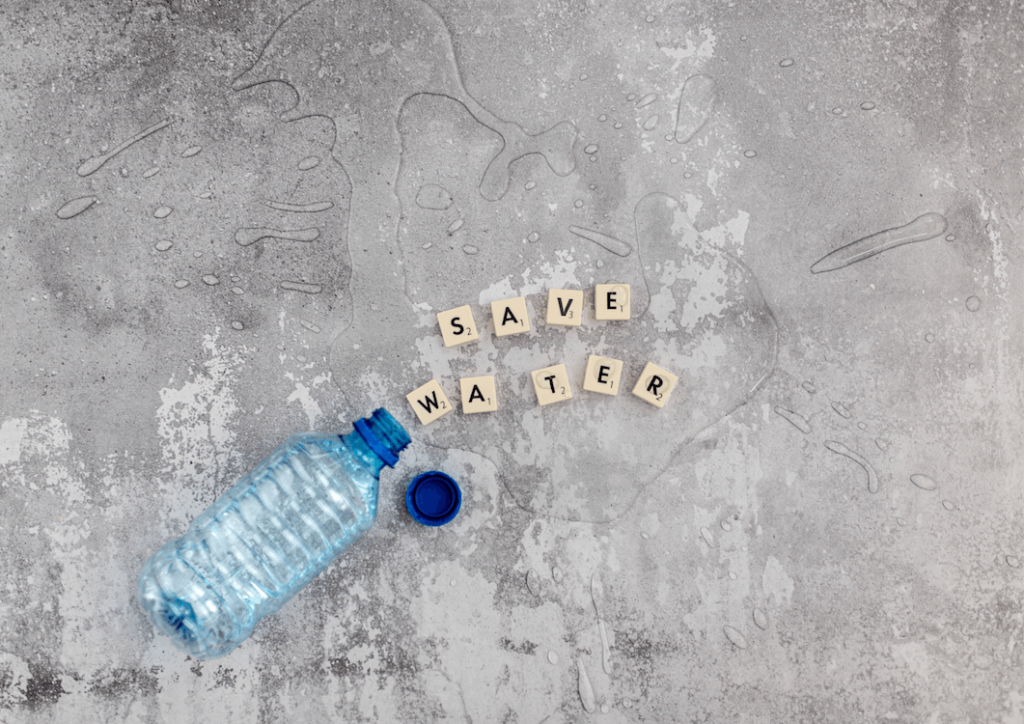
Supply and Demand Side Management
Addressing the global water crisis requires a multifaceted approach, and one key aspect is efficient supply and demand side management. On the supply side, investing in sustainable water sources, such as tapping into aquifers and developing reservoirs, is crucial while preserving natural water ecosystems.
On the demand side, promoting water-efficient technologies and practices in agriculture, industry, and households can significantly reduce water wastage and ensure more responsible water use.
Co-operation between Countries
Water knows no boundaries, and many water sources are shared among neighboring countries. Collaborative agreements and treaties between nations are vital to ensure fair and sustainable water management. Countries can cooperate to prevent conflicts over water resources, manage shared rivers and lakes, and collectively address water-related challenges by fostering cooperation.
Water Conservation
Conservation plays a pivotal role in solving the global water crisis. Implementing water-saving technologies, fixing leaky infrastructure, and raising awareness about responsible water use are essential. Governments and communities can also incentivize water conservation practices, such as rainwater harvesting and xeriscaping, to reduce overall water consumption.
Expanding Sources of Usable Water
To meet increasing water demands, exploring and expanding sources of usable water is essential. Desalination technologies, which convert seawater into freshwater, can be valuable in coastal regions. Additionally, investing in wastewater treatment and recycling facilities can provide a sustainable source of reclaimed water for various purposes, including agriculture and industry.
Virtual Water Trade
Virtual water trade involves importing water-intensive products rather than producing them domestically. This strategy can help water-scarce regions conserve their local water resources while meeting their needs through imports. By participating in virtual water trade, countries can optimize their water use efficiency and reduce the pressure on their water sources.
When implemented collectively and sustainably, these solutions can significantly alleviate the global water crisis, ensuring access to clean and safe water for current and future generations.
Conclusion
In conclusion, the global water crisis is an urgent issue with far-reaching consequences. It affects public health, food security, economic stability, and global politics. We must act collectively, embracing sustainable water management, technology, and international cooperation to secure clean water as a fundamental human right.
Inspiration comes from individuals, communities, and organizations dedicated to change. By prioritizing water conservation, equitable access, and responsible management, we can ensure abundant clean water for all. The global water crisis is daunting, but collaboration can protect our planet for future generations.
